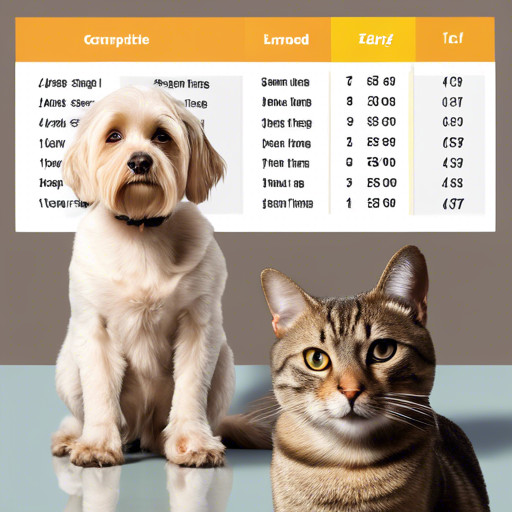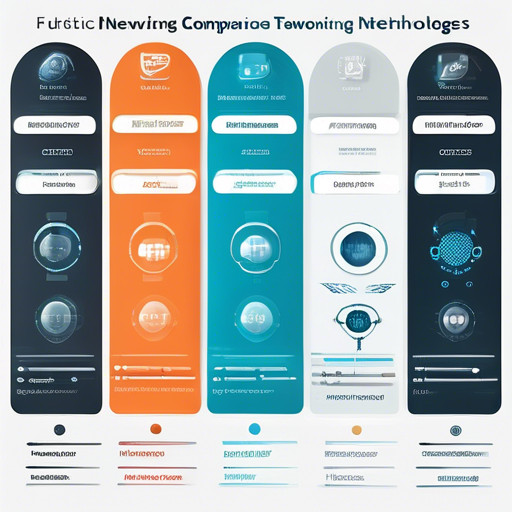
Cats vs. Dogs: A Comprehensive Comparison is a detailed exploration of the similarities and differences between these two popular pets. From their behavior and intelligence to their care and maintenance, this comprehensive comparison covers all aspects of owning and caring for a cat or a dog. Whether you're a cat person or a dog person, this comparison will provide valuable insights into the unique characteristics of each animal, helping you make an informed decision about which pet is best suited for your lifestyle. With a focus on key terms such as behavior, intelligence, care, and maintenance, this comparison aims to provide a thorough understanding of the differences and similarities between cats and dogs.
In the realm of domesticated animals, the eternal debate of Cats vs. Dogs has captivated pet owners for generations. This comprehensive comparison delves into the intricacies of feline and canine companions, exploring their distinct behaviors, cognitive abilities, and the intricacies of their upkeep. Whether you're a feline enthusiast or a canine aficionado, this in-depth analysis aims to shed light on the unique traits and care requirements of these beloved pets. By examining key aspects such as temperament, cognitive prowess, and maintenance needs, this comparison seeks to offer a comprehensive understanding of the contrasts and parallels between cats and dogs.
Regular exercise offers a wide range of benefits for both physical and mental health. Engaging in physical activity on a consistent basis can help individuals maintain a healthy weight, reduce the risk of chronic diseases such as heart disease and diabetes, and improve overall cardiovascular health. Additionally, regular exercise can contribute to better mental well-being by reducing stress, anxiety, and depression. It can also lead to improved cognitive function and better sleep patterns. Furthermore, participating in regular physical activity can help individuals build and maintain strong muscles and bones, as well as improve flexibility and balance, reducing the risk of injury and falls.
Moreover, regular exercise can have a positive impact on one's overall quality of life. It can boost self-esteem and confidence, increase energy levels, and enhance one's ability to perform daily tasks. Engaging in physical activity can also provide opportunities for social interaction and community engagement, leading to a sense of belonging and connectedness. Overall, the benefits of regular exercise extend beyond physical health, encompassing mental and emotional well-being, and contributing to a higher quality of life.
Physical activity encompasses a wide range of options, allowing individuals to choose activities that best suit their preferences and fitness levels. Aerobic exercises, such as walking, running, swimming, and cycling, focus on increasing cardiovascular endurance and overall fitness. Strength training activities, such as weightlifting and resistance exercises, aim to build and tone muscles, improve bone density, and enhance metabolism. Flexibility exercises, including yoga and stretching routines, focus on improving range of motion, reducing muscle tension, and preventing injury. Additionally, balance exercises, such as tai chi and specific yoga poses, help improve stability and reduce the risk of falls, especially in older adults.
Furthermore, individuals can engage in recreational activities such as sports, dancing, and outdoor pursuits, which provide both physical and social benefits. These activities offer opportunities for enjoyment, skill development, and social interaction, contributing to overall well-being. Additionally, incorporating everyday activities such as gardening, household chores, and active transportation into one's routine can contribute to overall physical activity levels. By choosing a variety of physical activities that align with personal interests and goals, individuals can create a well-rounded fitness routine that promotes overall health and wellness.
| Aspect | Cats | Dogs |
|---|---|---|
| Size | Small to medium | Small to large |
| Temperament | Independent | Dependent |
| Exercise Needs | Low | High |
| Grooming | Self-grooming | Regular grooming needed |
| Trainability | Less trainable | Highly trainable |
In conclusion, cats and dogs have their own unique characteristics and make great pets in their own ways. While cats are more independent and require less maintenance, dogs are loyal and highly trainable. The choice between a cat and a dog ultimately depends on individual preferences and lifestyle.







